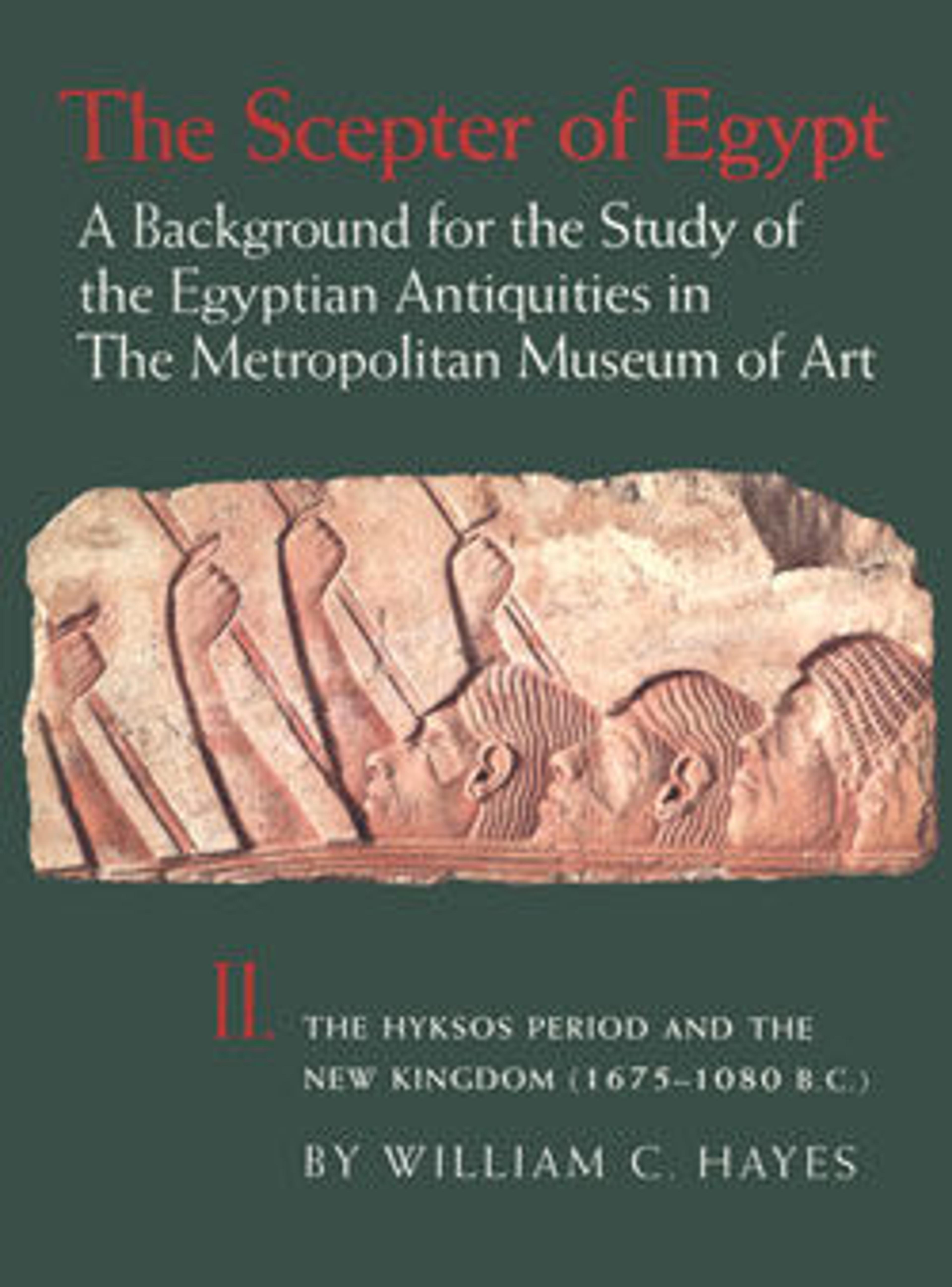Canopic box of Hatnefer
In 1936, the Museum's Egyptian Expedition discovered a rock-cut tomb on a hillside just below the offering chapel of Senenmut, one of Hatshepsut's best known officials. The tomb had been prepared for the burial of Senenmut's mother, Hatnefer, who had died in her 70s, early in the joint reign of Hatshepsut and Thutmose III. By this time, Senenmut had become an important official, and he could provide a comparatively rich burial for his mother, including this canopic box.
The box and lid are made of cypress which has been covered with a layer of linen and gesso, and painted white. Inside the two leaves of an inner lid pivot open to reveal four compartments that held the four canopic jars containing Hatnefer's internal organs (for a group of canopic jars from about the same period, see 12.181.253a–c). The box and lid have been constructed in the shape of a shrine and the base has two runners that imitate a sledge. Sledges were the most efficient way to transport large objects over mud roads and sand in ancient Egypt (see 24.1.84 for an actual sledge).
When the objects in Hatnefer's tomb were divided between the Museum and the Egyptian Antiquities Service, the Museum received a number of pieces including her gilded mummy mask (36.3.1), an exquisite heart scarab (36.3.2), and pieces of fine personal jewelry that were found on her mummy (36.3.3–.6).
The box and lid are made of cypress which has been covered with a layer of linen and gesso, and painted white. Inside the two leaves of an inner lid pivot open to reveal four compartments that held the four canopic jars containing Hatnefer's internal organs (for a group of canopic jars from about the same period, see 12.181.253a–c). The box and lid have been constructed in the shape of a shrine and the base has two runners that imitate a sledge. Sledges were the most efficient way to transport large objects over mud roads and sand in ancient Egypt (see 24.1.84 for an actual sledge).
When the objects in Hatnefer's tomb were divided between the Museum and the Egyptian Antiquities Service, the Museum received a number of pieces including her gilded mummy mask (36.3.1), an exquisite heart scarab (36.3.2), and pieces of fine personal jewelry that were found on her mummy (36.3.3–.6).
Artwork Details
- Title:Canopic box of Hatnefer
- Period:New Kingdom
- Dynasty:Dynasty 18, early
- Reign:reign of Thutmose II–Early Joint reign
- Date:ca. 1492–1473 B.C.
- Geography:From Egypt, Upper Egypt, Thebes, Sheikh Abd el-Qurna, Tomb of Hatnefer and Ramose (below TT 71), Canopic Box D, MMA excavations, 1935–36
- Medium:Wood, linen, gesso
- Dimensions:Box: H. ca. 53 cm (20 7/8 in.) ; W. 52 cm (20 1/2 in.); D. 51.5 cm (20 1/4 in.)
Lid: H. of lid 2.5 cm (1 in.); W. 51 cm (20 1/16 in.); D. 51 cm (20 1/16 in.)
Overall: H. 55 cm (21 5/8 in..); L. of sledge 79 cm (31 1/8 in.) - Credit Line:Rogers Fund, 1936
- Object Number:36.3.53a, b
- Curatorial Department: Egyptian Art
More Artwork
Research Resources
The Met provides unparalleled resources for research and welcomes an international community of students and scholars. The Met's Open Access API is where creators and researchers can connect to the The Met collection. Open Access data and public domain images are available for unrestricted commercial and noncommercial use without permission or fee.
To request images under copyright and other restrictions, please use this Image Request form.
Feedback
We continue to research and examine historical and cultural context for objects in The Met collection. If you have comments or questions about this object record, please contact us using the form below. The Museum looks forward to receiving your comments.
